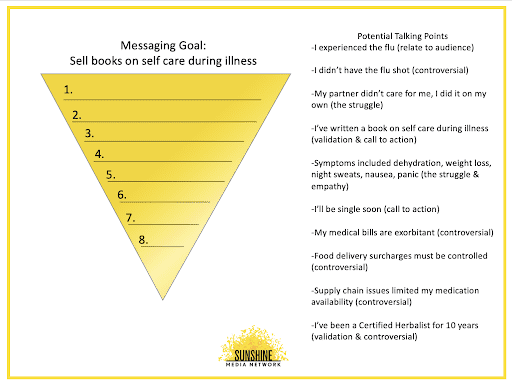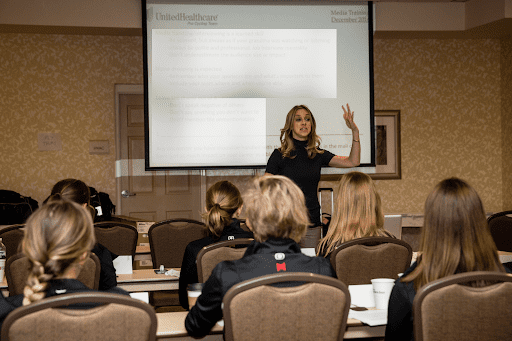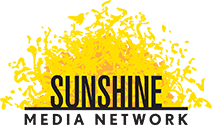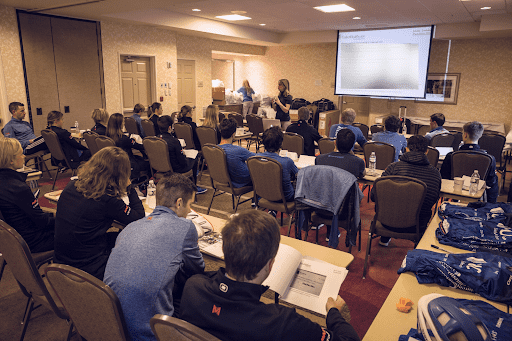Five Things You Learn In Media Training
The recent film “Don’t Look Up,” the apocalyptic dark comedy full of so many famous faces you spend most of the film saying “is that so and so?,” centers Leonardo DiCaprio and Jennifer Lawrence as two insanely smart Astronomy experts who discover a comet on track to destroy Earth in just a few months.
Not far into this two hour and 46 minute film, which absolutely could have been shorter, the experts find themselves going to the newspaper to reveal their discoveries after government officials disregard the threat. Bypassing traditional channels and chain of command to disseminate information is the Queen’s gambit move- common, an understood strategy, and can always backfire quickly and aggressively. The newsroom braintrust at the fictional The New York Herald advises the duo to lawyer up and immediately get media training.
Good media training can help you strategically maneuver interviews so you win every time.
Journalists actually appreciate someone who has had Media Training because they’re a better “soundbite machine.” On the flip side, journalists don’t want you to have good media training because then you’ll know how to sweep the leg in an interview. I really appreciate how that reference, once Gen X, has been handed down generations via Cobra Kai.
I’ve experienced a disappointing number of executives who believe they have the upper hand in news interviews (I can think of 528+ reasons why they believe this also). That attitude leaves Corporate Communication teams scrambling with the residue from bad interviews, and just as unfortunate, interviews that are completed but you didn’t get a W in that column. I also work on the journalist side with media junkets and the actors who either disregard or don’t implement their Media Training- it shows Every. Single. Time. In a recent junket, the Corporate Communications client requested a journalist “soften their questions.” And perhaps that’s one way to handle questions talent isn’t handling the way Corporate Communications’ teams prefer. But it really didn’t work out well when that particular journalist’s interview was canceled due to technical issues that couldn’t have been prevented. A better solution is to provide quality, thorough Media Training to your executives and on camera representatives (we call them Talent) so they are confident, prepared and capable of handling any question on any topic.
Back to the film… our Dr Mindy was oblivious to the disaster awaiting him in the morning show interview where he simply wanted to “speak his truth.” Impending doom doesn’t bode well for morning show audiences and the science speak was too intricate for the viewers likely multi-tasking their breakfast and TV consumption.
The shock from someone so highly intelligent and successful needing media training is quite common. Corporate Communications teams sometimes need to make a solid argument with their executives as to why and how media training can help them. Let us help you.
Here’s a scenario that’s easy to use to get the wheels turning: Imagine yourself talking about your experience with the flu that required a few days in bed. Conjure up the symptoms, the details, the anguish, who did or did not care for you, and then the relief when you were back on your feet. Who did you imagine you were talking to? A good friend, trusted coworker or family member? Now imagine telling that story to a stranger in an elevator. You only have a short ride, you don’t know them, what do you share and what details are left out.
Now imagine the elevator is stuck. After 15 minutes being stuck with this stranger do you disclose the intimate details of how your spouse really let you down and didn’t care for you thus painting a picture of a bad marriage? What was your reason for even telling a stranger that story?
This scenario brings up all the questions Media Training addresses and *keyword* trains someone to handle, plus come out on top. We believe every interview should be seen as a matchup, us vs. them and we want to win. We want to check off all of our goals and make every moment in the news sway our way.
Here are five things our signature Media training includes that increases your odds of winning an interview.
- Your goal for the interview
- Audience analysis
- What stays in, what is left out
- What they may ask you
- The tools you need in your toolbelt

Your goal is set, talking points are set but fluid
With media training, Sunshine Media Network helps you identify your Messaging Goal and five to eight goal Talking Points for interviews. We use the inverted pyramid visual to help outline talking points.
Your Messaging Goal is the overarching purpose of doing interviews. Some people frequently do interviews just for visibility. We make sure our clients have a deeper, more purposeful goal than just being seen. Your goal should be one that will last a good six months. Most people have a limited shelf life on media invitations. We’ve consistently seen someone ride the local and national circuit for six months before they’re oversaturated. Remember, media outlets want something unique, a scoop. If you’re showing up on every platform you will be shelved, so make sure your appearances have impact for your benefit.
Your talking points should also last a good six months unless something substantial changes in your business or in social culture. Too many people make the mistake of changing their messaging goals when they don’t see immediate results or a barrage of likes and shares on social media. Steady is the course when it comes to your media plan.
Set up your Messaging Goal, brainstorm with your media training expert your potential talking points and list them out. We’ll address what stays in and what stays out in #3.
Once your talking points are hashed out, the next step is deciding what the audience will respond to among those points.
Know who you are talking to
Let’s take our executive on the road with the flu story and goal of selling books. We send her (of course we’d have a woman executive) to a cocktail party, a funeral, a networking event and to a backyard barbecue. She’s required to discuss her goal at each and is aiming for wins of getting her book for sale in the conversation. She has to dip into the talking points media training already outlined and approved. But how does she know the best strategy? Easy- by strategizing.
Corporate Communications teams should always research the medium, the host or interviewer, the audience demographic, and explain best practices for the type of platform the executive is going to be interviewed. Our team excels at that kind of work which can fall through the cracks in the day-to-day Corporate Communications world.
A cocktail party may not be the place she discusses the discomforting side effects of the flu experience whereas a funeral more easily lends itself to heavy conversation. Just as we saw in the film, Tyler Perry and Cate Blanchett were morning show hosts uncomfortable with doom and gloom dialogue for their audience just waking up to face the day. Perhaps a morning show invitation should have been declined because there’s no way to “Pollyanna” impending global destruction. Turning down an interview that doesn’t favor your win is a good strategic move. And PS: producers from other shows at that network will take notice and may book you for their evening show since you weren’t booked earlier in the day. Producers at the same network compete with each other!
What stays in, what’s left out
This takes us right into discerning which talking points are left in and which you don’t discuss.
Type of interview determines a lot. A podcast that is 30 minutes, after editing, can allow you to touch all of your Talking Points and all will probably make the cut. However, a news package that is 1:15 long after editing could possibly only leave in two Talking Points.
Regardless of the final products’ duration, reporters can talk to you until they think they’ve gotten everything they can get. For a 2-minute story, if your executive discusses the supply chain shortages that affected their medication availability, that could become the whole story focus. And if it’s mentioned 30 minutes into the interview, everything said the first 30 minutes may not see the light of day.
Media Training can help practice discussing a few chosen Talking Points in a variety of different ways to keep the interview hyper focused on your goals and not the reporters’ goals. I’ve seen news stories come out that completely derailed from the topic pitched because the person being interviewed passively mentioned something more interesting as they got comfortable and forgot they’re not speaking with a friend, they’re speaking to someone with a goal in mind.
Honestly looking at what they may ask you
Your executive sits down for an interview on her experience with the flu and a goal to sell books and the second question posed is about her opinion on the Whooping Cough outbreak just reported. Did you see that coming?
Media training should include the “what if” scenarios. You have your Messaging Goal established now let’s attack it from every possible perspective.
Sunshine Media Network doesn’t wholly subscribe to the block and bridge phrasing. While it’s a long-standing technique, what many people recall when it’s time to implement said technique is the poor choice of words: Block. And that shortcoming results in failed execution. We’ve seen it happen so many times, we use our own phrasing that has proven successful. Just as you couldn’t even manage a temperamental toddler by blocking their request for McDonald’s, you’re not likely going to get off as easy with a trained journalist by blocking their question and bridging to your own agenda.
The tool you need in your toolbelt
You’re armed with focus: Message goals and talking points. You’re armed with information: who you’re speaking to and what appeals to them. You’re prepared to self edit: what will you have time to talk about and what has to wait for another interview. And you are armed with strategy for anything that comes your way: you’ve had a session in the war room on possible ways this interview can go. What’s left?
Media Training can give you some tools to put in your utility belt specific to your own nuances. For the government cabinet member whose upper lip sweats profusely, we told Mr. Secretary it was vital a makeup artist addressed this before all on-camera interviews, non-negotiable, a gesture was determined by his team to signal to him off camera, and he was instructed on the best times to do a quick wipe with his hand if it was necessary on camera.
For the executive who couldn’t remember three specific words utilized for a national marketing campaign and vital to wins in her interviews, we developed an acronym to more easily help her remember the order and words she had to say in her interviews.
For the Senior Vice President who made a quirky agreement noise that came across condescending, we helped arm him with a replacement. And it was a tool we implored him to use all the time to break a habit that wasn’t serving him during news interviews.
Consistently, our media training includes tools to help clients replace crutch words. By the time someone reaches out to us for media training they’re not likely using the word “Um.” But we can identify other crutch words. Absolutely, As I said, Well, and So are sneaky words that find their way into answers and we want to replace those with more valuable and impactful ones.

These five areas are only a part of what your Media Training should cover. Juggling multiple messaging goals, integrating marketing messaging, and crisis response are other areas that should be incorporated into your Media Training plan.
Media Training should really be an on-going practice with one big workshop followed by reviews of performance, fine tuning and implementation of the next levels of skills. Anyone can stand at home plate with a bat and hit a ball. You can be coached to hit that ball consistently. But with practice and repeated coaching, you’ll soon be able to hit that ball out of the park and to exactly where you pointed the bat when you approached the plate.
Storymaking Academy
Need to hire a videographer and don’t know where to look for one? Let us help you!
If you need to start telling your story to grow your business but don’t know where to begin, sign up for our Storymaking Academy which begins Thursday, December 1, 2022, at 1:30 PM EST.
We’ve created seven topics from video basics to how to build your database. Visit our Eventbrite collection to learn about all we are offering. Take a few or take all seven, these 1.5-hour live sessions are packed with information to help you and your business.
Email us for a discount code to save $77 on each section Alexys@SunshineMediaNetwork.com
Or fill out the form on the right and sign up for our newsletters to always receive discount codes.


